Skillet Teriyaki Chicken Thighs
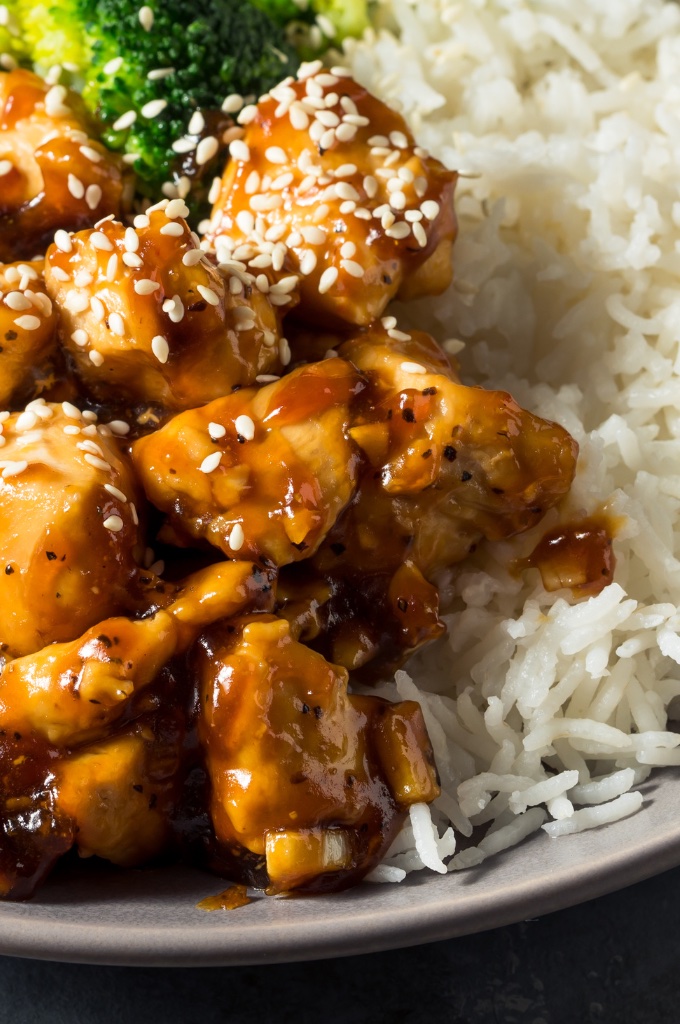
Skillet Teriyaki Chicken Thighs is our go-to dinner recipe during busy weeknights. Perfectly seared chicken thighs that are moist and tender. And the teriyaki sauce is equally delicious. Without a doubt, the whole family is going to enjoy this easy and delicious dinner.
JUMP TO RECIPElet’s get social
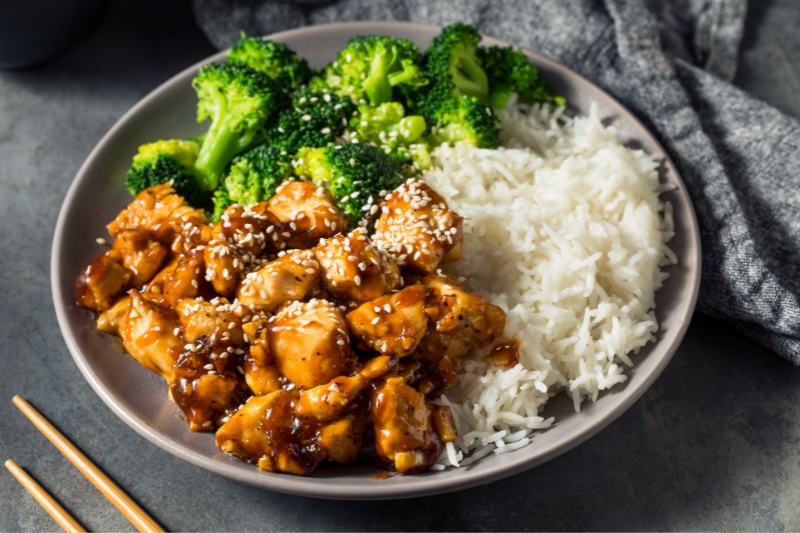
what is teriyaki
Teriyaki is a cooking technique used in Japanese cuisine. Basically, the teriyaki sauce is a combination of soy sauce, mirin, sugar, and sake. As it becomes more popular in other countries, they start incorporating ginger, garlic, and honey. These aromatics surely boost the flavor of the sauce. And also adding cornstarch help thicken it. If you like to read more about teriyaki, visit Allrecipes.
My version of this Skillet Teriyaki Chicken Thighs is simple in comparison to authentic Japanese cuisine. For one thing, I didn’t use mirin or sake. But even though I didn’t use alcohol I still get the flavor pretty close to Japanese teriyaki by using vinegar, brown sugar, soy sauce, oyster sauce, cornstarch, and sesame oil. Given that I didn’t use mirin or sake in order to ramp up the flavor – my family and friends are still in awe of the robust flavor and simplicity of this dish.
Check out Teriyaki Salmon it’s certainly one of the recipes my family love.
ingredients notes


SAUCE:
- Soy sauce – is significantly an important ingredient. It brings the umami flavor of the sauce to the next level. To control the salt I rather use low-sodium soy sauce.
- Oyster sauce – also boost the umami flavor of your dish. If you’re not a fan of oysters, there’s a vegetarian oyster sauce that’s made with mushrooms. Check out Sun Luck oyster sauce for details.
- Rice vinegar – is equally important because it renders acid that gives your dish a distinct tanginess.
- Brown sugar – contrasts the flavor while giving your sauce a hint of sweetness.
- Cornstarch – is a thickening agent and also makes the sauce glossy.
- Water – is needed to dilute the cornstarch and also help control the thickness of the sauce.
- Sesame oil – is nutty and gives a nice finish to your dish.
- Red chili pepper flakes – are my favorite pepper to add to my sauce. Even though I use it sparingly, you can always add more to ramp up the heat of your dish.
CHICKEN AND AROMATICS:
- Boneless chicken thighs – are the best part of the chicken to use for this recipe. As a result, the meat stays moist and renders more flavor.
- Salt and pepper – are important ingredients to season your meat.
- Cornstarch – coats the chicken, and makes it crispy when fried. Lightly coat the meat and shake off the excess.
- Vegetable or Canola oil – is my choice when frying. Use a neutral oil with a high smoke point to avoid the chicken from burning.
- Garlic – is finely minced.
- Ginger – is peeled and also finely minced.
- Scallions – are unquestionably my favorite type of onion for this dish. I used the white part for sauteing and the green part to garnish the dish.

how to make skillet teriyaki chicken thighs
PREP AND COOK:
- Mince garlic and ginger. I find it easier to peel the ginger with the back of a spoon. It should yield a tablespoon of minced garlic and a teaspoon of finely minced ginger. Slice the green onions, save the white part for sauteing later, and the green part for garnish.
- Make the sauce. In a measuring cup or a bowl, combine soy sauce, oyster sauce, rice vinegar, brown sugar, cornstarch, water, sesame oil, and red chili pepper flakes. Use a fork or a small whisk to mix the sauce until the sugar and cornstarch dissolve. Set it aside.
- Prep the chicken. Once you trim the fat, place the chicken pieces into a bowl, and season with salt and pepper. Add the cornstarch, coat the chicken and shake off to remove excess cornstarch. Lightly coat the chicken.
- Heat a cast iron skillet or a nonstick skillet with oil. Once the oil is hot enough (about 300ºF), carefully place the chicken thighs in a hot pan. Do not overcrowd, and cook in batches. Cook for 5 minutes on each side or until golden brown and the internal temperature reaches 165ºF. Remove from the pan and set aside.
- Use the same pan, add garlic, ginger, and white scallions, then saute until fragrant. Add the sauce, stirring constantly for a minute or until it is thickened.
- Add the cooked chicken back into the pan. Turn off the heat and smother the chicken with sauce.
- Garnish with green onions, and immediately serve with steamed rice or vegetables.
recommended recipes
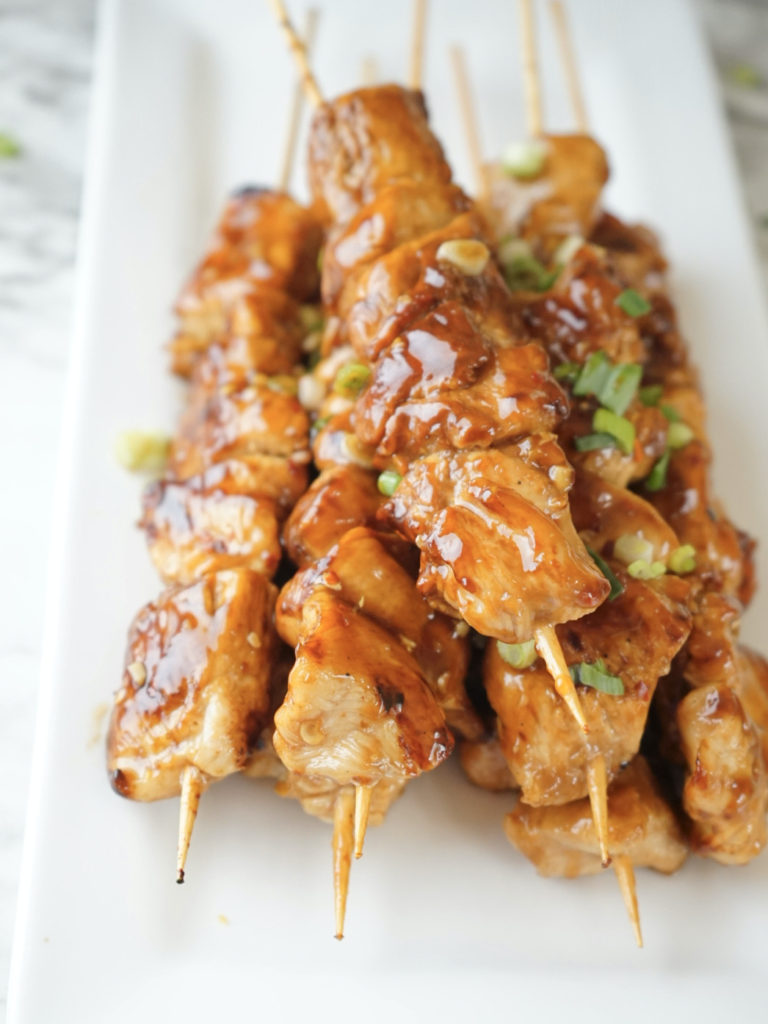
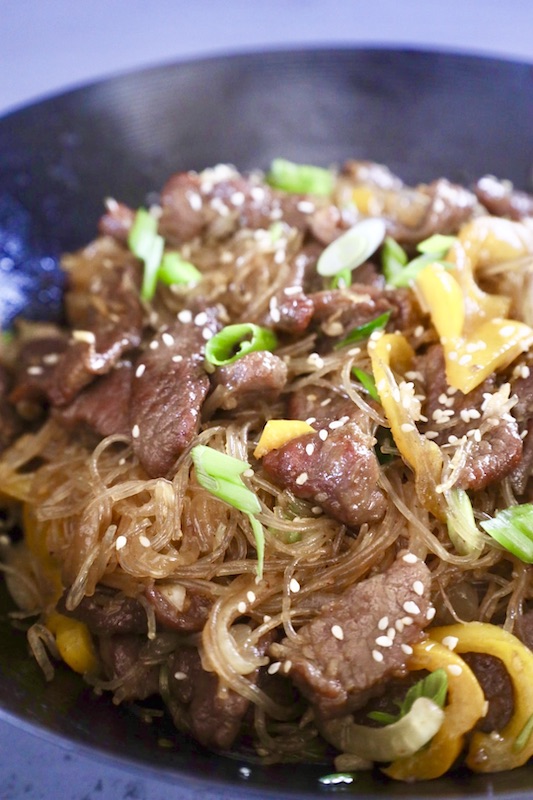
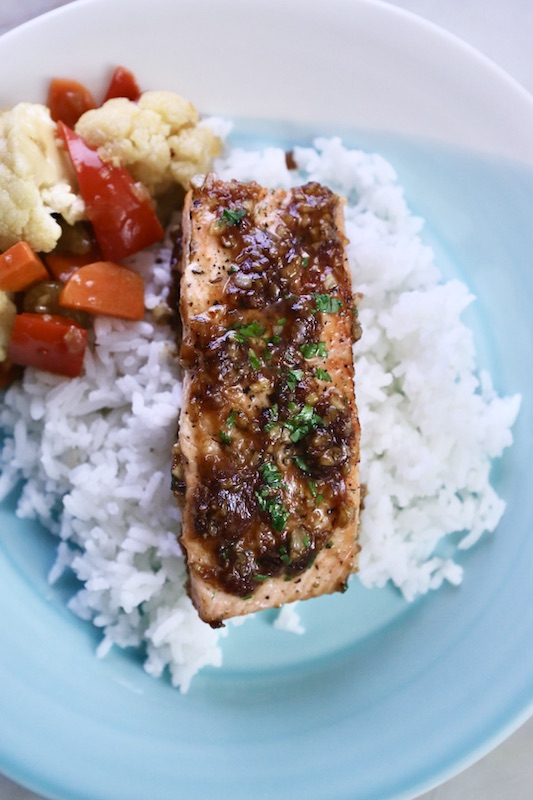
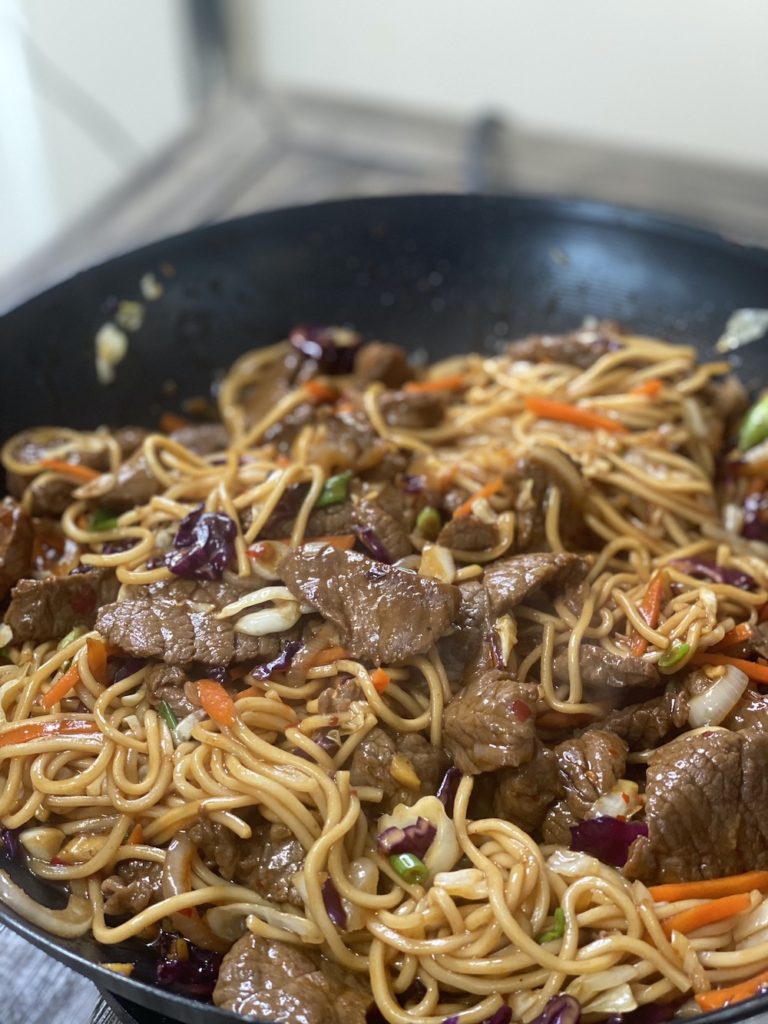
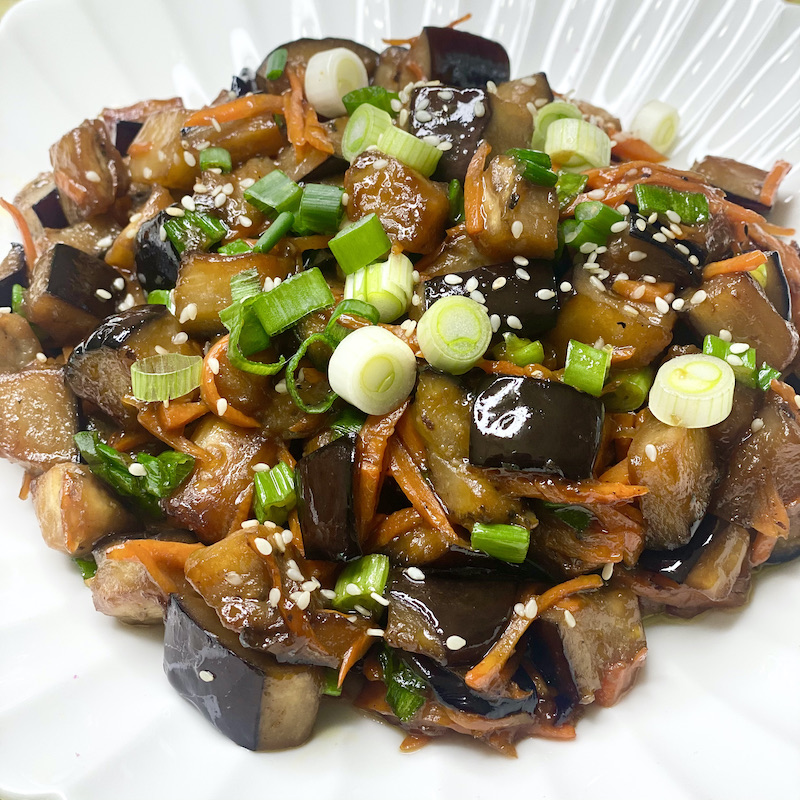
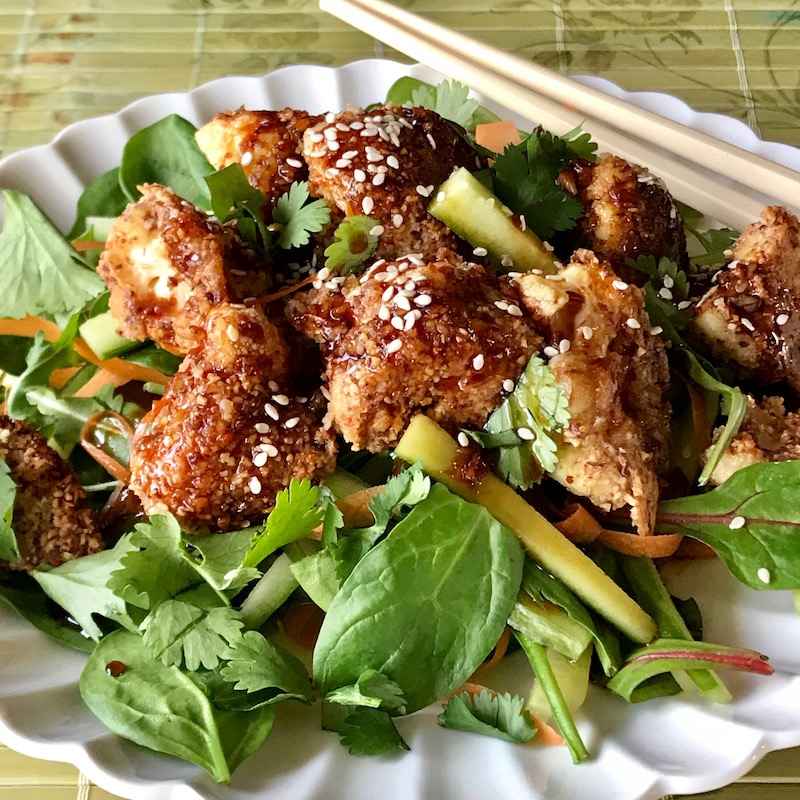

Skillet Teriyaki Chicken Thighs
Equipment
- Cast iron skillet or nonstick skillet
- Tongs
- knife
- cutting board
- Measuring cups
- Measuring spoons
Ingredients
FOR THE SAUCE
- 3 tablespoons low sodium soy sauce
- 3 tablespoons oyster sauce
- 1 tablespoon rice vinegar
- 2 tablespoons brown sugar
- 1 teaspoon cornstarch
- 2 tablespoons water
- 1 teaspoon sesame oil
- 1/2 teaspoon red chili pepper flakes
FOR THE CHICKEN
- 2 pounds skinless boneless pieces of chicken thighs
- 1 teaspoon sea salt
- 1/2 teaspoon ground pepper
- 2 tablespoons cornstarch
- 3 tablespoons vegetable oil, for frying
- 5 cloves minced garlic
- 1 teaspoon minced fresh ginger
- 2 stalks scallions or green onions, sliced, separate white and green parts
- 1 teaspoon sesame seeds, option
Instructions
FOR THE SAUCE
- In a measuring cup or bowl, combine soy sauce, oyster sauce, rice vinegar, brown sugar, cornstarch, water, sesame oil, and red chili flakes. Use a fork or whisk, stirring constantly until the sugar and cornstarch are dissolved. Set it aside.
FOR THE CHICKEN
- Place the chicken thighs in a bowl, and season them with salt and pepper. Add cornstarch, and toss to coat. Shake off excess cornstarch.
- Heat a cast iron skillet or nonstick skillet with oil. Once the oil is hot enough (around 300ºF), add the chicken thighs to the pan. Do not overcrowd, and cook in batches. Fry for 5 minutes on each side or until golden brown or when the internal temperature reaches 165ºF. Remove from the pan and set them aside.
- Use the same pan, if the pan starts drying add more oil. Add garlic, ginger, and the white part of the scallions, and saute until fragrant.
- Add the sauce, and lower the heat, stirring constantly until thickened. Turn off the heat, and smother the chicken with the sauce. Garnish with green onions and sprinkle some sesame seeds.
- Serve with steamed veggies or steamed rice.
Video
Notes
- If you’d like to substitute the chicken with salmon here’s my recipe for Teriyaki Salmon.
- The sauce can also be used to marinate any meat you like. It’s great with beef, pork, or even turkey. You can also use it for stir-frying veggies.
- When the sauce starts simmering, immediately turn the heat off. Make sure not to burn the sauce.
- You can also grill the chicken and pour the sauce over it. This is nice during Summer grilling.
- You can substitute the oyster sauce with a vegetarian oyster sauce, made with mushrooms.
 FOLLOW US ON INSTAGRAM @leanbellaskitchen
Make sure to come back to the blog post and give us star ratings and reviews.
FOLLOW US ON INSTAGRAM @leanbellaskitchen
Make sure to come back to the blog post and give us star ratings and reviews.faq
Certainly, store it in an airtight container and refrigerate it for up to 4 days. Or freeze for 3-4 weeks.
Good question. If you’re trying to meal prep and would like to make 2-3 different types of dishes for the week using the same sauce, you’re in for the money. This teriyaki sauce is so versatile. You can make stir-fried veggies, and you can use them for any seafood, and any type of meat you like. You can make grilled chicken and pour the sauce over it.
Yes. The apple cider vinegar has a nice fruity flavor and it will go well with the teriyaki sauce.
recommended equipment
get free one week meal prepping recipes


Hi there! Nice to meet you. My name is Jen.
Hello, nice to meet you! I’m Jen, a mom of 2 wonderful girls. I love to prepare home-cooked meals. Cooking and planning your meals might sound like another chore added to your already long list of things to do. Believe me, I’ve been there. Surely, cooking more meals at home is worth all the effort. After years of cooking for my family and teaching culinary classes, I can honestly say that I have more control over the quality of the ingredients I use. It’s important to realize that when you cook better you eat better.
Eating healthy doesn’t have to be boring and you don’t have to eat the same thing repeatedly. There are ways we can naturally enhance our food’s flavor and enjoy home-cooked meals.



